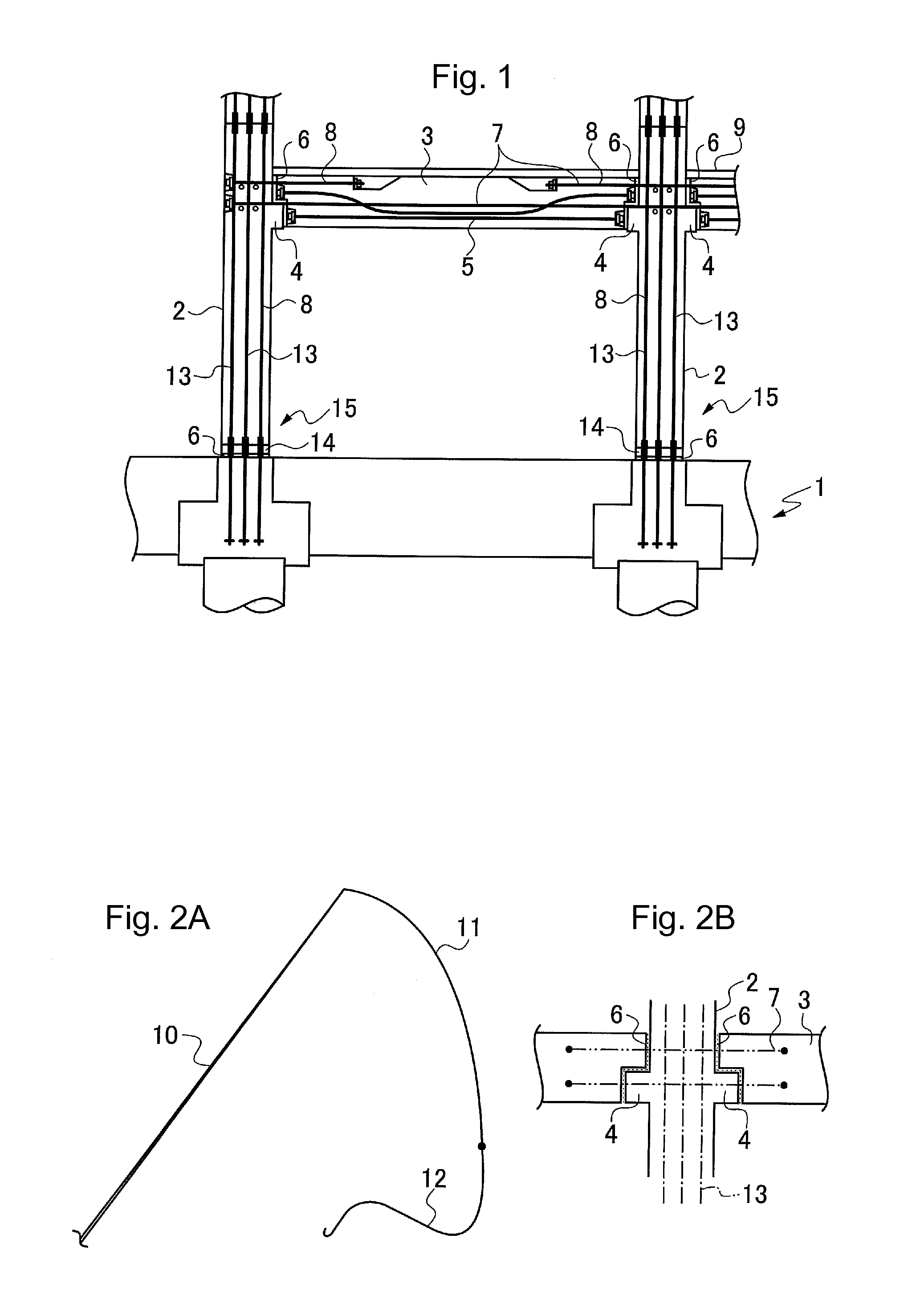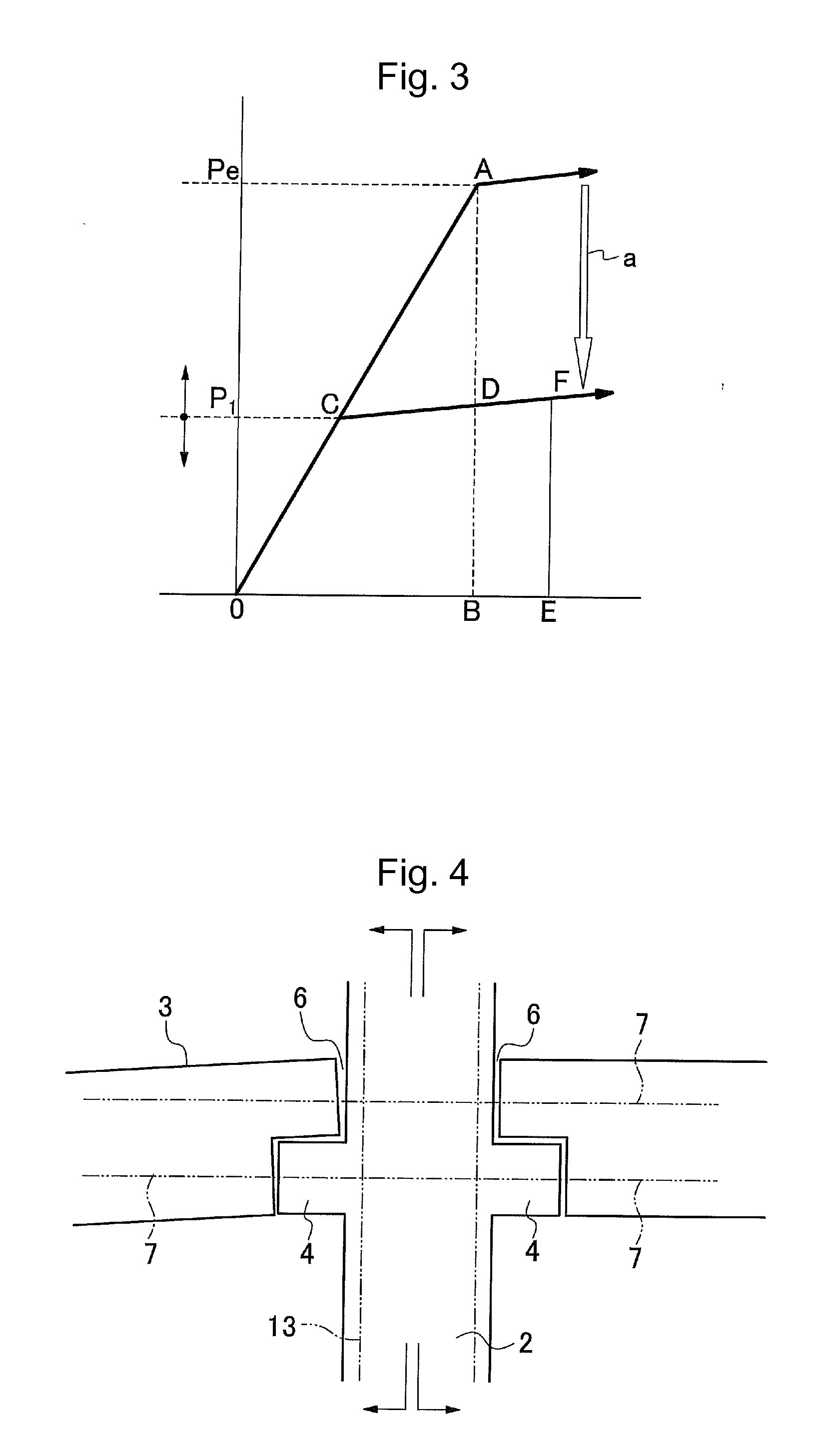Earthquake resisting design method on the basis of PC binding articulation construction method
a technology of pc binding and construction method, which is applied in the direction of shock-proofing, building components, building repairs, etc., can solve the problems of loss of cross section of the column itself, deformation of the reinforcement rod, and inability to repair, so as to achieve the effect of reducing deformation and superior effects
- Summary
- Abstract
- Description
- Claims
- Application Information
AI Technical Summary
Benefits of technology
Problems solved by technology
Method used
Image
Examples
Embodiment Construction
[0056]An earthquake resisting design method on the basis of a PC binding articulation construction method according to the present invention will be described in detail, based on an illustrated embodiment.
[0057]As illustrated in FIG. 1, a basic configuration of a building by the PC binding articulation construction method is a rigid frame structure including a foundation 1, columns 2, and beams 3. The columns 2 and the beams 3, which are construction members, are high-strength precast prestressed concrete members. A base block 14, to be worked as a column base, is installed between the foundation 1 and each of the columns 2 of the lowest stage. A binding joint 6 (a binding joint portion) is provided under the base block 14. A prestressing tendon 13 (a second secondary prestressing tendon) is disposed to penetrate through the foundation 1, the base block 14, and the column 2. The prestressing tendon 13 joins the foundation 1, the base block 14, and the column 2 integrally by binding ...
PUM
 Login to View More
Login to View More Abstract
Description
Claims
Application Information
 Login to View More
Login to View More - R&D
- Intellectual Property
- Life Sciences
- Materials
- Tech Scout
- Unparalleled Data Quality
- Higher Quality Content
- 60% Fewer Hallucinations
Browse by: Latest US Patents, China's latest patents, Technical Efficacy Thesaurus, Application Domain, Technology Topic, Popular Technical Reports.
© 2025 PatSnap. All rights reserved.Legal|Privacy policy|Modern Slavery Act Transparency Statement|Sitemap|About US| Contact US: help@patsnap.com



